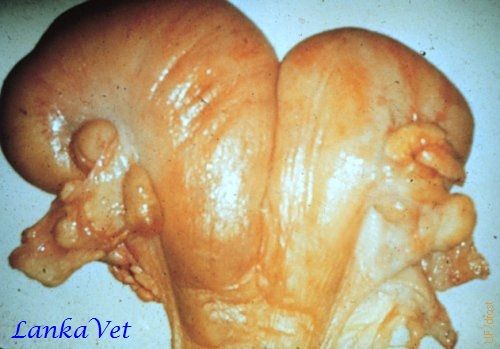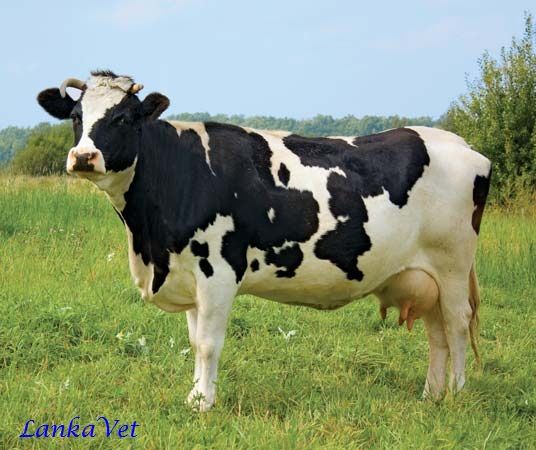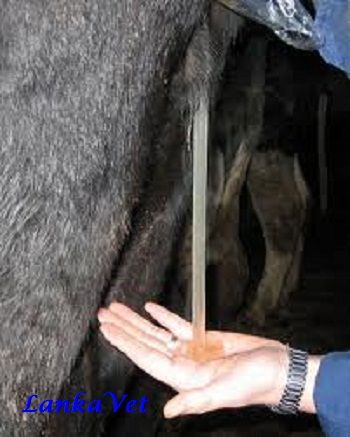Pyometra is characterized by the accumulation of purulent
or mucopurulent exudate in the uterus. In cows, it is invariably accompanied by
the persistence of an active corpus luteum (CL) and interruption of the estrous
cycle. Discharge from the genital tract may be absent or intermittent and
corresponding to periods of estrus. As a rule, affected animals do not exhibit
any systemic signs of illness.
- It is a prerequisite to distinguish Pyometra from pregnancy before treatment is undertaken.
- On Rectal examination, the uterine wall is generally thick and has no tone
- No fetal membrane slip
- Cotyledons and uterine artery fremitus is not palpable in pyometra
- Pus tends to congregate at the apex of uterine horns
Signs
- Affected cows do not exhibit any systemic signs of illness
- Purulant vaginal discharge from the uterus
Management of Pyometra
- Treatment of plan in cows is administration of PGF2α or its analogs to removal of pus in the uterus.
- PGF2-alpha also causes regression of the CL in other conditions with a persistent CL such as mummified fetus, mucometra, and macerated fetus.
- Lavage of the uterus using large volumes of fluid is recommended for expulsion of exudates and bacteriologic clearance of the uterus.
- After expulsion of exudates in the uterus, use of parentral antibiotic is recommended.

* Penicillin and streptomycin 0.5 to 1 gram
* Tetracyline
* Aeromycin
- Although first-service conception rate after treatment may be low, up to 80% of cows may be expected to conceive within 3-4 inseminations.
- In a small proportion of cows, the treatment may need to be repeated.
- No intrauterine treatment is recommended in conjunction with the prostaglandin.
- Corynibacterium pyogenes is usually difficult to cure.
- In cases that lasted just 60 to 120 days, healing and conception are more likely to occur.
- If the condition frequently recurs, as a permanent cure in these cases requires hysterectomy.


No comments:
Post a Comment